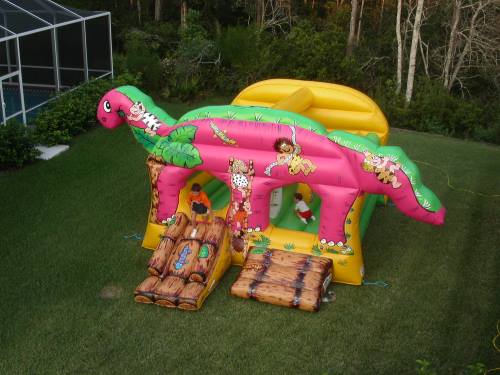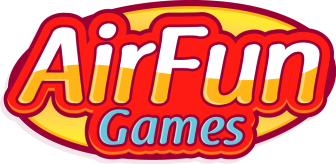
The bounce house has long been such a mainstay of birthday parties, fundraisers and carnivals that it probably rarely occurs to most people to wonder where they came from in the first place.
Whether designed as fantasy castles, dog houses or the underwater kingdom of Atlantis, bounce houses are something you expect to see at parties where there will be kids.
Of course, it wasn’t always that way. Fittingly, considering how much happiness they have brought children, bounce houses came into being through a happy accident.
NASA Scientist and the Space Walk
John Scurlock, an engineer from Center, Texas, who graduated from Texas A&M University, lived in New Orleans, La. A World War II veteran, he worked developing products for the oil and gas industry and NASA. It was his work with the latter that led to the bounce house.
While working with plastic materials, he became interested in the various creative possibilities. He began a project in 1959 to develop a cushioned cover for tennis courts, but while designing a prototype he happened to see his employees using the covers to jump up and down on during a break.
These fun-loving employees were the first to understand the simple joy of bounce houses.
They weren’t called bounce houses, then. They weren’t even a “house” as the earliest versions had no walls. Scurlock and his wife, Frances, founded a company called Space Walk to manufacture his new invention. Scurlock died in 2008 and, according to his obituary from the Lake Lawn Metairie funeral home near New Orleans, his invention gave “tremendous joy to people throughout the world.”
Interestingly, Scurlock also invented the large air cushion used by rescue crews to safely catch people falling from buildings. This same invention is also used by Hollywood stuntmen.
Inflatable Bounce Houses Take Off
John Scurlock’s son, Frank, is credited with expanding his parents’ business nationwide, offering the company’s inflatables for rent. (In the late 1980s, he expanded into inflatable play parks, which also have become hugely popular.)
The first inflatables were without walls, just the air cushion. Later, in the 1960s, walls were added, but that also caused the inflatable to become hot. In 1974, cushioned, inflatable columns were added. These columns supported side walls made of netting, making the houses much cooler.
By the 1970s, consumers could order a “Moon Walk” – essentially an enclosed, inflatable, trampoline – from Neiman Marcus.
Current Bounce Houses
Some inventions take time for the public to want, some take off immediately. Bounce houses definitely fall in the latter category. Just a decade after Scurlock had his idea, you could buy one from a catalog. By the 1990s, bounce houses were beginning to show up at parties everywhere. With the heat problem solved and safety concerns addressed, bounce houses were becoming the go-to rental for parties where kids are present.
Seeing a business opportunity, many entrepreneurs opened inflatable rentals companies. It also is a business that attracts creative minds. Over the years, the design of the bounce houses has become more and more elaborate. Some have painted designs that are thematic, including animal motifs and superhero themes.
They’ve been coupled with other ideas as well. Some now come with slides, for example, or tunnels and tubes. And inflatables themselves have expanded to include obstacle courses, huge slides and climbing walls.
So the next time you and your kids are enjoying this party staple, remember how it all began: by a brilliant engineer who loved inventing and a group of employees who found a way to enjoy a break from work.
With that type of history, no wonder bounce houses are so much fun.

